Home » babies in cars » Weathering the Heat Wave
Weathering the Heat Wave
- Jan, 06, 2016
- Adrienne
- babies in cars, heat exhaustion, Heat wave, pets in cars, South African, Summer
- No Comments.
Weathering the 2018 Heat wave.
I posted this last year in January and now I feel the need to post again!
I love heat, this year I am in a moonboot for a torn ligament and am struggling along with everyone else, this is unusual for me as I only really start to feel the heat at around the 38C mark.
So, instead of looking at housekeeping, I thought of looking at ways to keep cool and also a bit of advice on recognising heat exhaustion.
What is a heat wave?
First, what exactly is a heat wave? A heat wave is when the daily maximum temperature exceeds the average maximum by 5˚ for more than 5 consecutive days. So, at this time of year, when we should be experiencing temperatures of between 20 and 26˚C, we are experiencing more than 30˚C in Johannesburg and some places have even reached into the 40˚C range.
The most important part of dealing with a heat wave is keeping cool. Young children and people over 65 are the most at risk for complications arising from the heat wave.
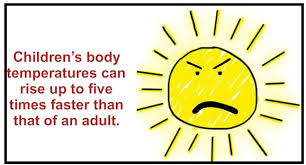
Please remember that cars can reach temperatures of over 40˚ within minutes and kill quickly, so no matter how quick you think you will be, do not leave kids and pets in the car.
In the city and urban areas, the temperature is much higher, due to the heat absorption by solar panels, tarred roads and tall buildings.
Stay by your aircon!
The average healthy person should slowly drink up to 4 cups of water every hour if they are outside, in the car, or in a non- air-conditioned environment or doing physical activity. Those in the Cape where water restrictions apply, should rather remain indoors.
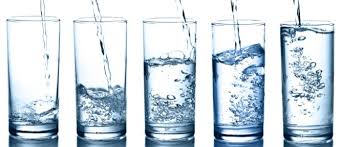
High protein foods such as salted nuts can also help with the loss of sodium (salt) during sweating.
Try to find the coolest room in your house if you do not have an air conditioner. If you are in a double storey, you will find that the rooms upstairs are usually the hottest, so spend as little time as possible in them.
Have quick, cool (lukewarm) showers.
Wear loose, light weight clothing; wear a hat and sunglasses to protect your face and eyes. Avoid wearing dark clothing as this absorbs the heat.
No Exercise please!
Do not exercise between 10 am and 2 pm as this is the hottest part of the day and presents the greatest risk.
You can get heat exhaustion even while swimming!
Swimming will not totally reduce the risk of heat exhaustion, or heat stroke, as it often masks the symptoms. When swimming, make sure to continue to drink water. Sunscreen is vitally important as sunburn can lead to dehydration. While swimming may prevent your body from overheating, it is still exercise and you will not notice sweating, so it is important to keep drinking water while in the pool!

Avoid excessive alcohol, as this can dehydrate you even faster.

Recognising heat exhaustion:
What will you see?
Person will be cool and clammy (sweaty)
Sweating excessively
Tired, fatigued and listless
Light headed or dizzy
Slightly uncoordinated
Cramping of the arms, legs and abdomen (stomach)
Headache
Nausea
Recognising Heat Stroke
Heat stroke is a medical emergency and the person must be taken to a doctor or emergency room
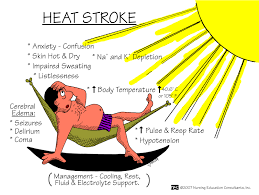
What will you see?
Temperature of 40˚
Severe headache
Light headed and dizzy
Disorientated
Confusion
Nausea and vomiting
Irritable behaviour and emotional instability
Muscle weakness and cramps
Flushed, red face
They are no longer sweating!
Very fast heartbeat (pulse)
Very fast, shallow breathing
Seizures (fitting)
What do you do?
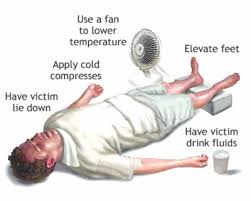
For both heat exhaustion and heat stroke:-
Move the person to a cool place and remove as much clothing as possible. Either put the person in a cool shower or use a cool damp cloth to wipe them down
Give them water or an energy drink to replace the fluids and minerals that they have lost.
If there is no improvement within 30 minutes, call an ambulance or take the person to the emergency room.

While you are waiting for medical assistance, place a cool damp sheet over the person and place ice packs in the persons groin area, under their armpits and behind their neck (they should not start shivering, if this happens remove the ice packs)
Children dehydrate and suffer heat complications faster than adults, so every time you drink give a few sips of water to the baby or child, If you are breast feeding and the baby is under 6 months, give the baby the breast for shorter periods more often. DO NOT GIVE THE BABY WATER.
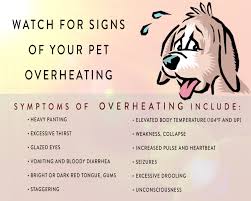
Stay cool and stay safe, this is just the beginning and meteorologists have predicted that we will have a lot more of these high temperatures.
Once again, thank you Google for my images.
- accident prevention
- App reviews
- babies in cars
- Books
- Braai
- Bread Recipes
- budget gifts
- Budgeting
- Budgeting in South Africa
- calendar
- Celebrations
- Cellphone safety
- Chanuakah
- Chicken recipes
- Child safety
- Children
- Chrismukah
- Christmas gifts
- Daily budgeting for South Africans
- Debt
- distracted driving
- driver safety
- drowning
- Environmental Issues
- Family
- Family Calendar
- Finance
- food
- Food for toddlers
- Food Myths
- Freedom Day
- frugal gifts
- grocery shopping
- Health
- heat exhaustion
- Heat wave
- Heritage Day
- household management
- I -Plan
- I-cook
- Jewish food
- JOFR
- Johannesburg
- Kosher
- Lockdown
- Managing your household
- Meal Planning
- Meat Recipes
- monthly shopping
- Nurses Day
- Obesity
- online shopping
- Organisation and clean up
- Parenting
- personal finance
- Personal safety
- pets in cars
- Public Holidays
- Quick meals
- Random Ruminating
- Recipes
- Religious holidays
- Reviews
- saving money
- School
- slow cooker
- Slow cooker recipes
- Soup
- South African
- Specifically Jewish
- Summer
- Teenagers
- textbooks
- texting
- Tu B Av
- Uncategorized
- Vegetarian Recipes
- Winter
- Workers Day
- workshop
- Xmas gifts
- September 2025
- May 2025
- November 2023
- October 2022
- August 2021
- February 2021
- January 2021
- November 2020
- September 2020
- August 2020
- June 2020
- May 2020
- April 2020
- March 2020
- February 2020
- January 2020
- November 2019
- October 2019
- September 2019
- August 2019
- May 2019
- April 2019
- February 2019
- January 2019
- November 2018
- October 2018
- September 2018
- May 2018
- April 2018
- March 2018
- February 2018
- January 2018
- August 2017
- May 2017
- April 2017
- March 2017
- February 2017
- January 2017
- December 2016
- October 2016
- September 2016
- August 2016
- July 2016
- May 2016
- April 2016
- March 2016
- February 2016
- January 2016
- December 2015
- November 2015
- October 2015
- September 2015
- August 2015
- July 2015
- June 2015

Leave a Reply